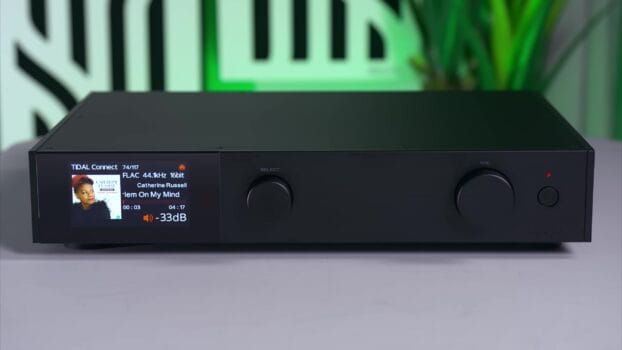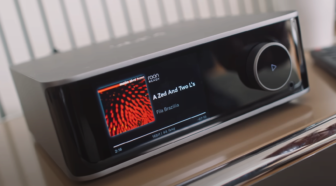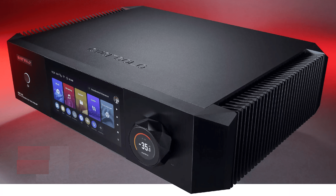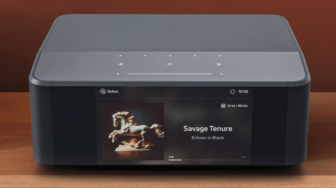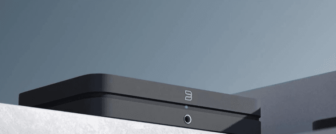Audiolab has long proven its expertise in creating highly musical products at affordable prices. This also applies to network players, or streamers, as they are now called. The 6000N, with its open DTS Play-Fi platform and digital architecture, managed to create a lot of amazement for a little over $500 at the Auditorium, while probably causing quite a bit of shock to its competitors.
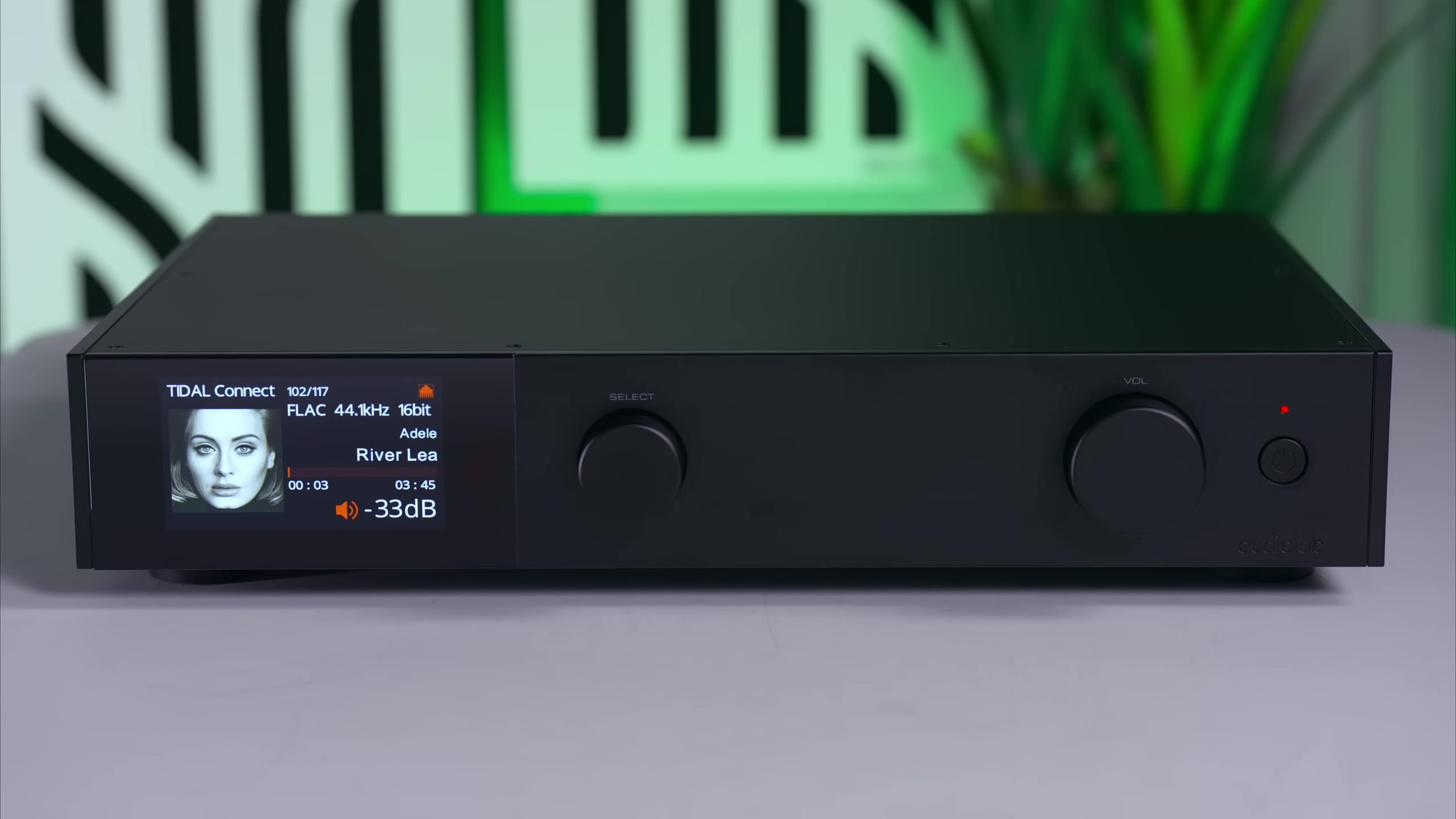
Audiolab was founded in 1983 by Philip Swift and Derek Scotland with the goal of providing straightforward and affordable technology with high sound quality. Their success was significant, with the 8000 series (including 8200 and today’s 8300) becoming the foundation of their portfolio, expanded with preamps, sources, and monoblocks. In Germany, Audiolab was sold as “Camtech,” earning a solid reputation. Following its acquisition by McLaren, Audiolab products were rebranded as TAG McLaren for several years. Eventually, Audiolab became part of the International Audio Group, where renowned developers like Jan Ertner and Peter Comeau fine-tune their acoustic designs.
Features and Build
The same likely applied to the 7000N. But for the top 9000 series, something more exquisite was in order. So, they opted for a powerful ARM Quad-Core processor with 1.8 GHz clock speed per core. Coupled with a custom Linux-based software, a user-friendly yet powerful app, integration of all major streaming services, support for DSD, MQA, and Roon, and a steadfast commitment to top-level sound quality, it aimed to compete with the best in the world.
We can only speculate that their mutual distribution channels led Audiolab and Lumin, two renowned names, to collaborate. This test will determine how successful that was.
During the development of the 9000N, there was a remarkable and fruitful collaboration between well-established and seemingly friendly specialists. While Audiolab focused on the DAC periphery and output stage, the experts at Lumin contributed their know-how in streaming engine technology. The partnership led to features on the Audiolab 9000N that are not even available on some of Lumin’s larger devices, such as WiFi connectivity. However, for high-resolution streaming, we still recommend using a stable LAN cable connection.
Lumin was actually tasked with developing the entire streaming board, essentially the “engine.” This was certainly not a one-way street, and Lumin’s product range likely benefited from this collaboration as well.

Let’s go step by step. For the DAC, they only considered the best, ultimately choosing the ES9038 Pro from ESS Sabre, which Audiolab’s experts, led by Jan Ertner, optimized with meticulous circuit topology. This high-end processor ensures PCM conversion up to 768 kHz and 32-bit, as well as DSD512.
It is no secret that Audiolab knows how to build analog output stages, as demonstrated by devices like the 8300CDQ, which is highly regarded by the author of these lines. A look under the hood reveals the connection to this legacy and explains why the 9000N, as a preview, sounds so superb.
Natural Affiliations
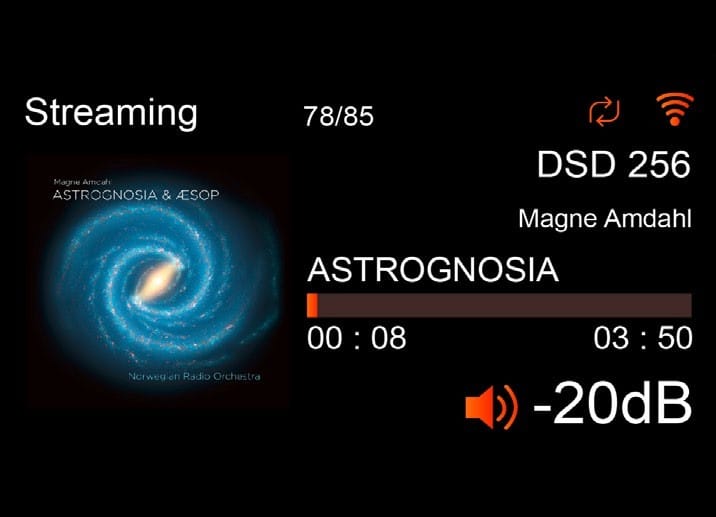
The visual and tactile design of the 9000 series is simply well-executed. Whether in black or silver, Audiolab avoided the commonly used symmetrical design, instead positioning the striking, high-resolution 4.3-inch color display on the left front side. This design, inspired by the Golden Ratio or Fibonacci, feels both harmonious and modern.
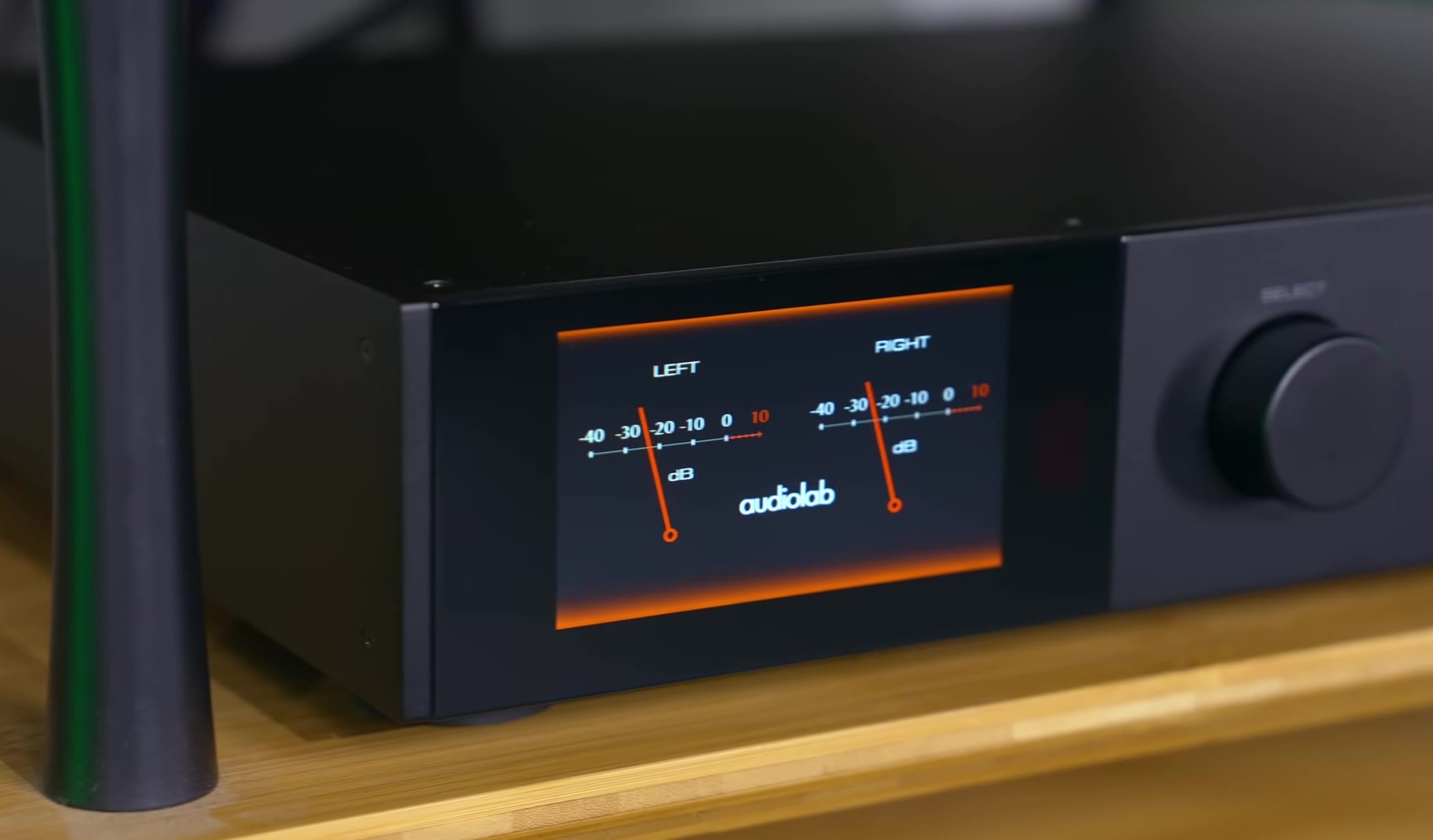
When placed alongside the 9000A, 9000CDT, or the 9000N, the displays appear to form an informational center. The design is also consistent with the preamp expected at the High End 2024 event. Two large control knobs and the main switch complement the display, resulting in a deliberately minimalistic design that is enhanced by the inclusion of a system remote despite the app control.
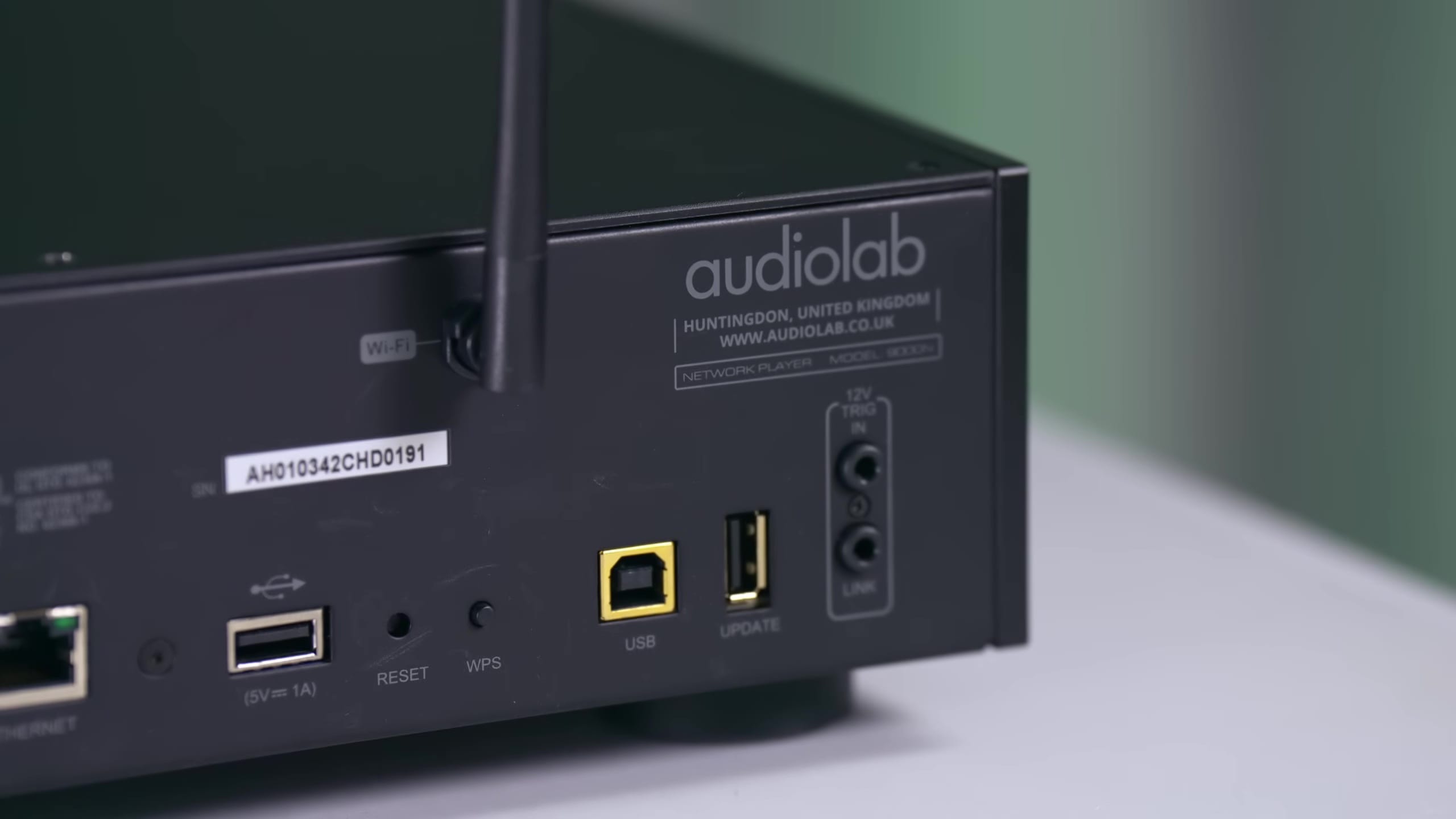
The unique design might not integrate perfectly with other brands’ devices, but Audiolab can’t be blamed for promoting its own products. Thanks to its versatile architecture with adjustable volume control (preamp function), the 9000N streamer should integrate well into most setups.
The Audiolab app, designed for iOS and Android, requires some acclimatization but is generally user-friendly. It supports UPnP for home networks, as well as streaming services like Qobuz, Tidal, and TuneIn radio. Although MQA support is now less critical, Roon-readiness remains a priority. We would also like to see Amazon Music added, which is reportedly in development.
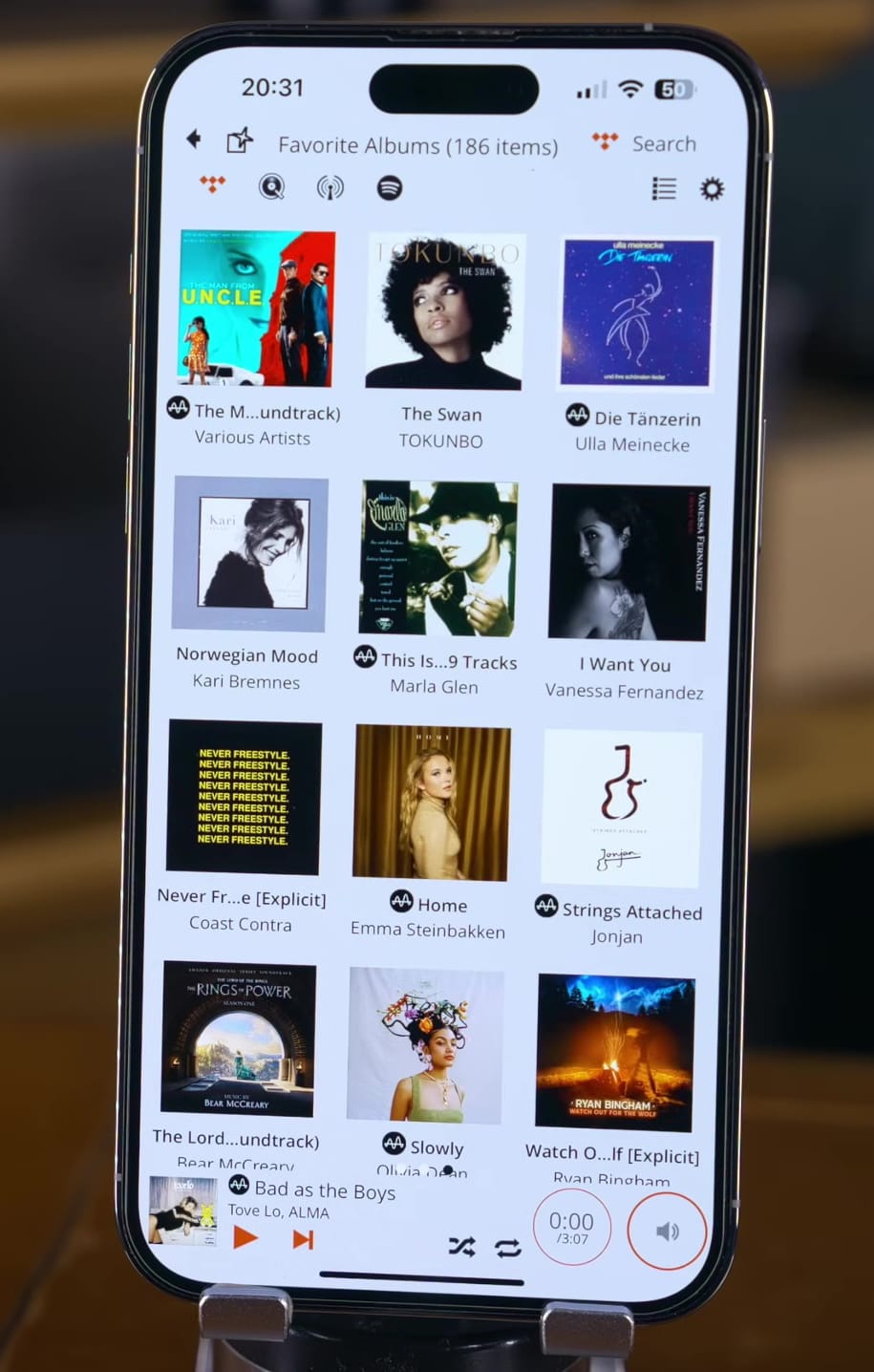
Complete Feature Set
The 9000N supports both LAN and WiFi, including Airplay 2, USB A/B ports for music playback from storage devices or as a sound card for PCs/Macs, and digital outputs. Unfortunately, the top-tier DAC is not available for external sources, and there is no headphone output.

The analog outputs offer both balanced and unbalanced options. If desired, the device can act as a controllable music source, directly powering active speakers or an amplifier.
The low output impedance allows for convincing sound quality even with longer cables. The fully metal-encased Audiolab impresses with its high build quality, precise engineering, and attention to detail. Additional features include five selectable filters (Linear Phase, Minimum Phase with both gentle/steep drop-offs, and Hybrid) for different sound characteristics. We particularly enjoyed the Hybrid filter’s approach.
Despite its strengths, the 9000N does have some limitations. It lacks DTS Play-Fi for multi-room audio and does not support Dirac Live room correction—a feature that would greatly enhance its versatility. These missing features might be a deal-breaker for those looking for broader connectivity options or room correction capabilities.
Sound Quality
The Audiolab 9000N boasts excellent measurement results, with distortion values featuring two or even three zeros after the decimal point, and negligible noise levels. Its frequency response exceeds 80 kHz, and its output levels reach just over 2 volts via RCA and over 4 volts via XLR. Priced at approximately $2,499, the 9000N is Audiolab’s most expensive component, targeting the higher end of the market.
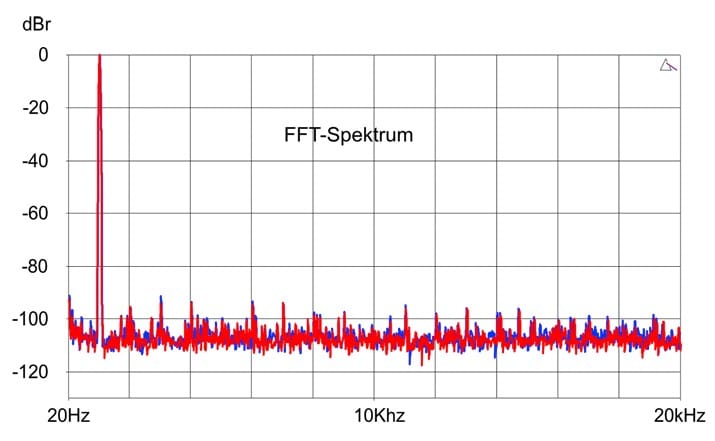
The Audiolab 9000N delivers a stunning audio performance at a surprisingly reasonable price for its category. Its clear, dynamic sound brings out every detail, with engaging rhythm and exceptional timing.
The internal components include a robust power supply, sophisticated output stage, and separate streamer and digital boards.
The Audiolab’s sound is both transparent and full-bodied, with excellent dynamics. Reinhard Mey’s latest album, with its emotional delivery and his slightly worn voice, sounds incredibly natural. Tori Amos’ live piano performances are conveyed with clarity and precision. This network player is exceptional!
Specs
| Price in USD | $2,499 |
| Dimensions (W x H x D) in cm | 44.4 x 8.9 x 33.3 |
| Weight in kg | 6.2 |
Gallery
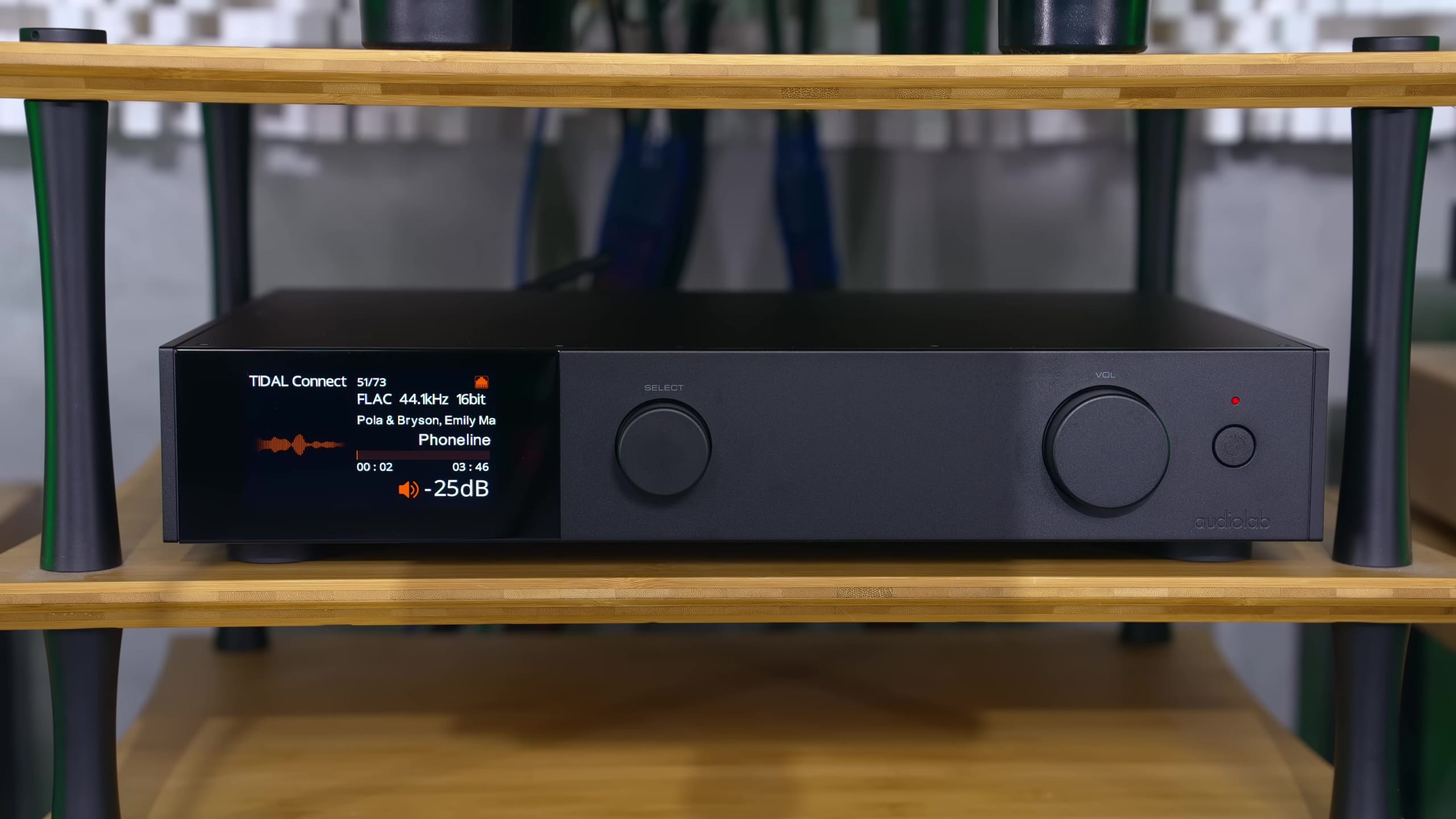
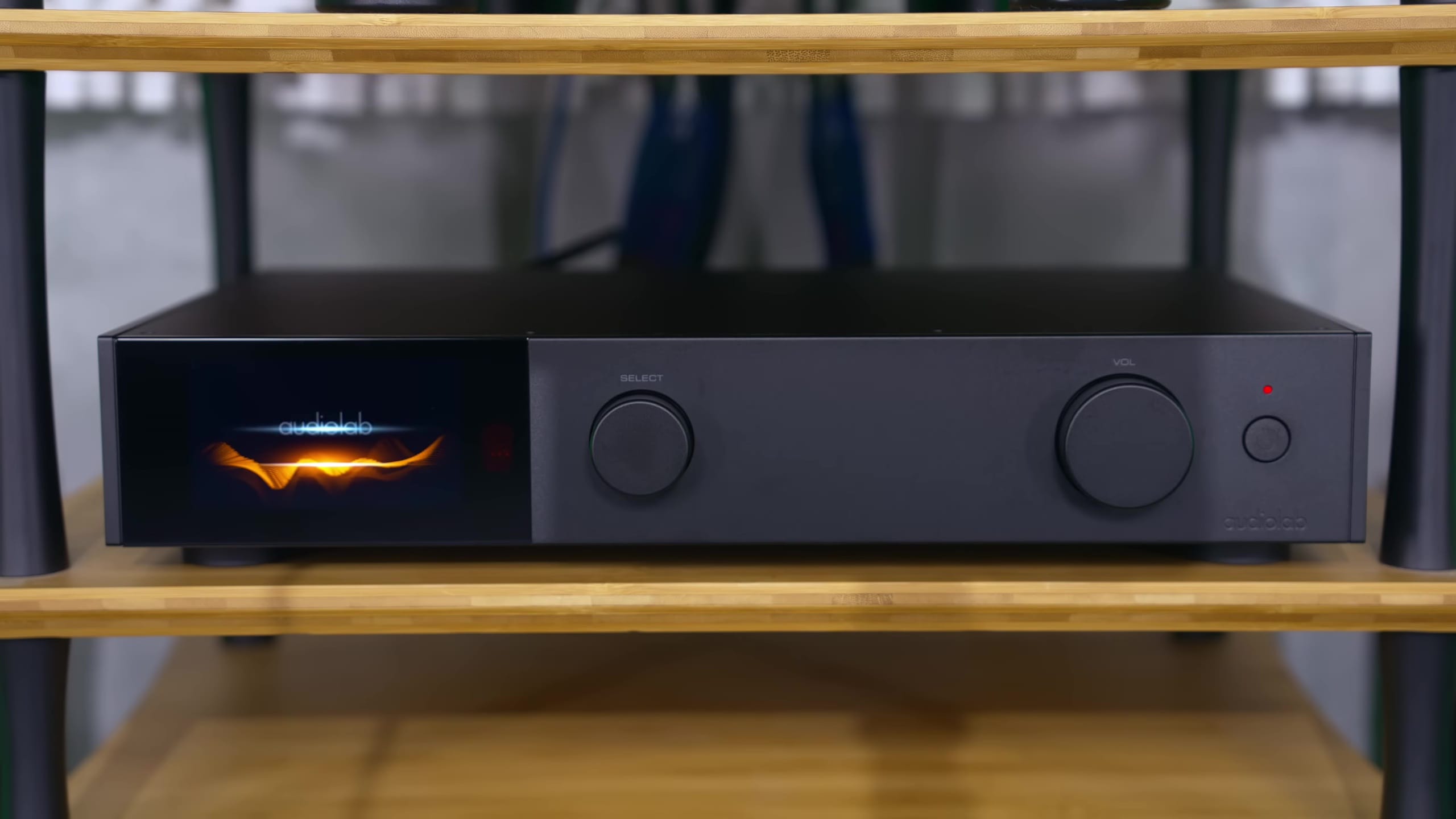

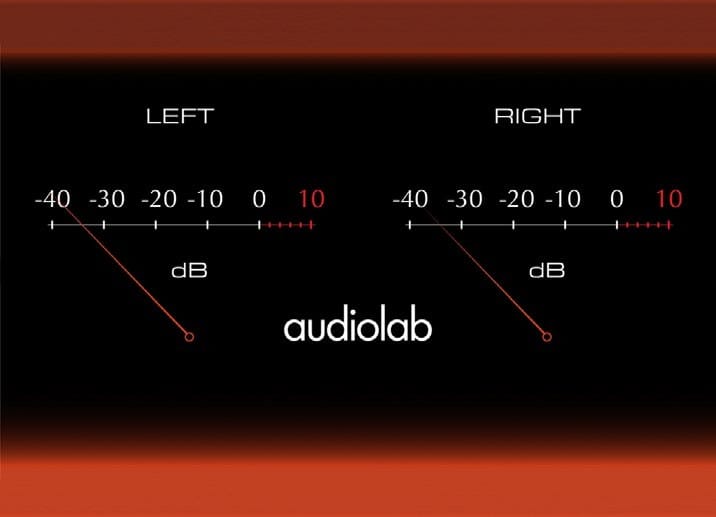
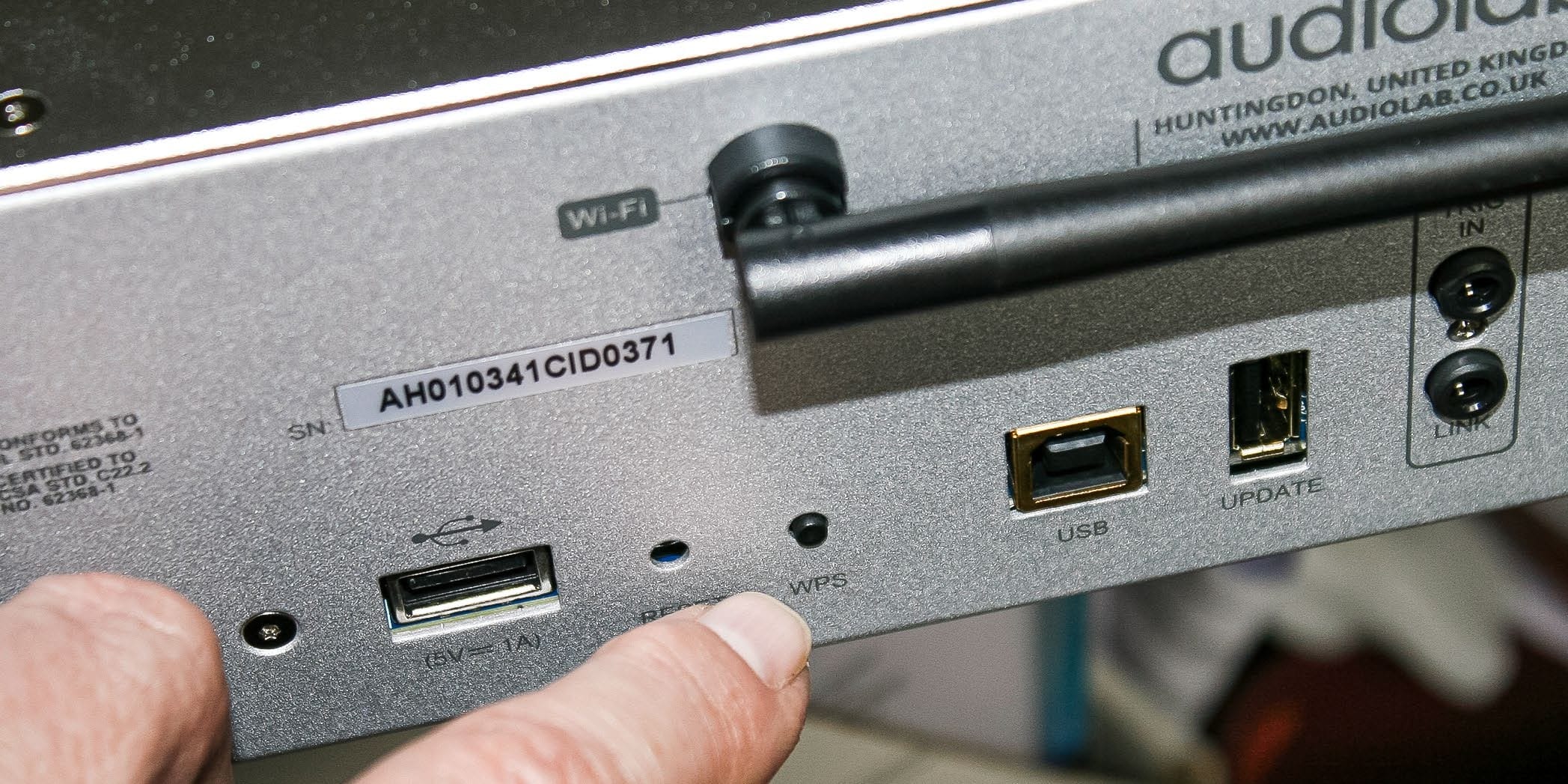
Verdict

| Sound Quality (40%) | |
| Rating | 8.4 / 10 (good) |
| Sound Characteristics | Smooth, elegant, voluminous, slightly warm, detailed, open |
| Measurements (5%) | |
| Rating | 8.6 / 10 (very good) |
| Noise Floor Digital Null (in Decibels) | Good (9.9) |
| Output Voltage (in Volts) | Very good (9.2) |
| Output Impedance (in Ohms) | Good (8.0) |
| Distortion Factor at -9dBFS (in Percent) | Very good (9.8) |
| FFT Spectrum | Very good |
| Features (25%) | |
| Rating | 8.1 / 10 (good) |
| Digital Inputs / Outputs | Only USB / coaxial / optical |
| Digital Filters Switchable | Yes |
| Outputs / Adjustable Output | Cinch, XLR / Yes |
| Headphone Output | No |
| Music Formats Supported | Practically all |
| Build Quality / Finish | Good |
| Streaming Standards | Qobuz, Spotify, Tidal, TuneIn |
| USB Storage Support | Yes |
| Handling (25%) | |
| Rating | 7.9 / 10 (good) |
| Remote Control / Manual Quality | Good / Good |
| Device Control / Display | Very good |
| App Quality | Satisfactory |
| Service & Environment (5%) | |
| Rating | 8.3 / 10 (good) |
| Warranty (in Years) | Good (3) |
| Packaging | Good |
| Power Consumption Standby / Idle (in Watts) | Very good |
| Hard Power Switch | Yes |

